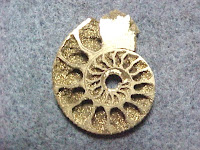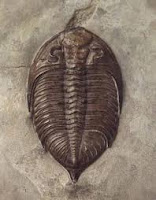remains, imprints, or traces of prehistoric organism
permineralized remains
fossil in which the spaces inside are filled with minerals
carbon film
thin film of carbon residue preserved as fossil.
mold
cavity in a rock
cast
copy of an original object
index fossil
remains of species that existed on Earth for short periods of time
principle of superposition
states in undisturbed rock layers, the oldest rocks are on the bottom and the young ones nearer the surface
relative age
unconformity
gasps in rock sequences
absolute age
age, in years, of a rock or other object.
radioactive decay
the process of breaking down
half-life
time it takes for half of atoms in the isotope to decay
radiometric dating
processes use to calculate the absolute age of rock
uniformitarianism
the principles states of Earth procceses ocurring today are similar to those occurring today




























